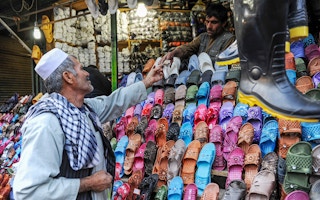Inclusive growth is sustained growth that creates jobs, draws in the majority of people—especially the marginalized—into the economic and social mainstream, continuously reduces poverty and vulnerability, and promotes social protection against life, natural disasters and others risks.
This enhances equality among people and society, not only the poor but also those who are marginalized in terms of gender, geographical location, ethnicity, disability, and faith. It creates meaningful and ethical development.
Inclusive growth requires more than economic growth – targeted efforts from both the public and private sector toward solving the common problems of the poor (employment, income opportunities, and access to basic goods and services), which goes beyond welfare and charity.
For growth to be inclusive, it has to be made so. There is empirical evidence that economic growth does not trickle down to the poor and low-income population. Some governments are also slow in providing basic goods and services to the poor, which comprises the bulk of the population in developing countries.
In Asia, the poor and low-income segment—referred as the base of the income pyramid (BoP)—is about 60 per cent of the population, with a per capita expenditure under $3 a day. The BoP in Latin America has a higher income ceiling of $8 a day.
“
Inclusive business is the direct contribution of the private sector to make growth more inclusive. Hence, inclusive growth needs companies with inclusive business models that provide solutions for the job and service delivery problems of the poor.
In countries where governments are unable to provide basic goods and services for the poor and low-income population, the private sector is the main provider of decent jobs and income opportunities, as well as relevant and affordable goods and services such as housing, drinking water, access to information, schools, and health facilities. Inclusive business is the direct contribution of the private sector to make growth more inclusive.
Hence, inclusive growth needs companies with inclusive business models that provide solutions for the job and service delivery problems of the poor.
Inclusive growth needs not just business, but private sector solutions for the poor. Traditional thinking about the poor and low-income population is that doing business in this space is not viable. But some companies are looking at the segment as a market prospect, or part of the supply chain.
The key elements in entering into this market are to understand the problems of the poor, and create innovative solutions. These are significant challenges that business managers will have to overcome, as traditional business tends to ensure financial viability.
On the other hand, inclusive business benefits the poor (as consumer or supplier) by creating buying power, self-esteem and aspirations, and improving access to basic goods and services.
Inclusive business models create direct and tangible value for both the company’s bottom line and for the poor and low-income people, and there is no trade-off between financial return and social impact. Some inclusive business models also have triple bottom lines to benefit poor people, the growth of a company and its shareholders, and the environment.
Inclusive business models can be delivered by micro and small companies. However, to reduce mass poverty, investments with more social impact are required, so the most relevant inclusive business models are operated by medium-sized and large firms.
Jeffrey Gerobin is associate operations analyst, Sustainable Development and Climate Change Department, Asian Development Bank. This post is republished from the ADB blog.


















